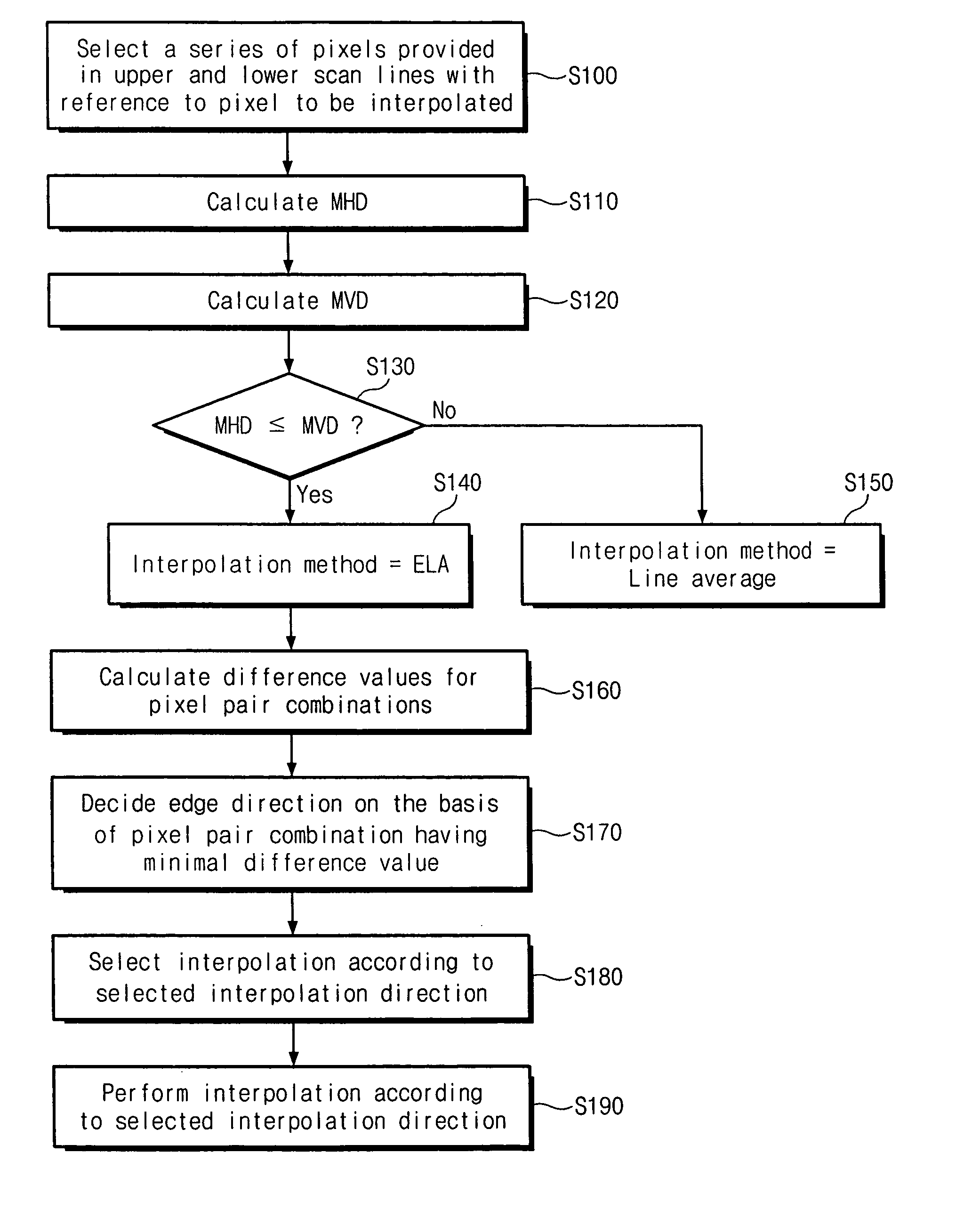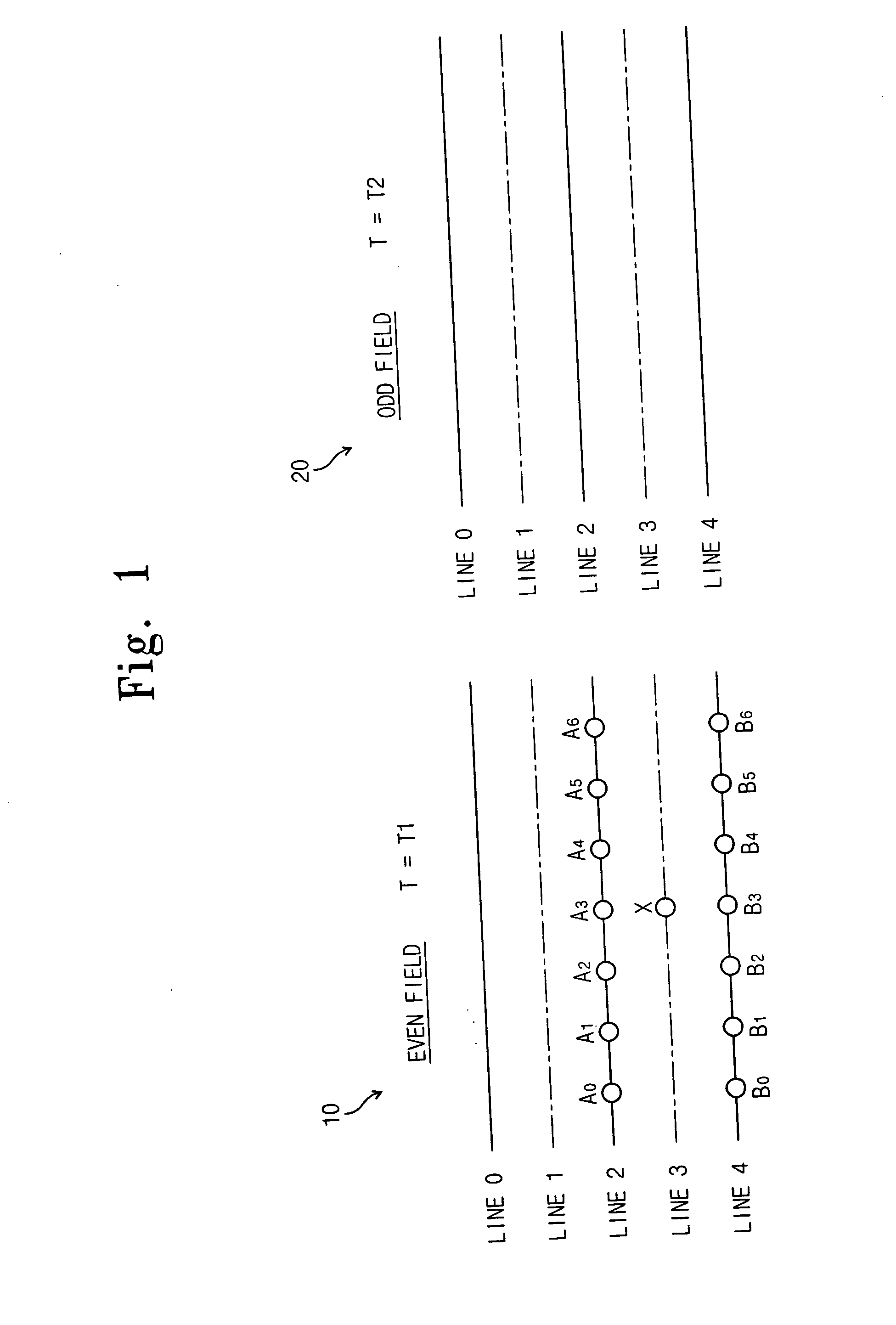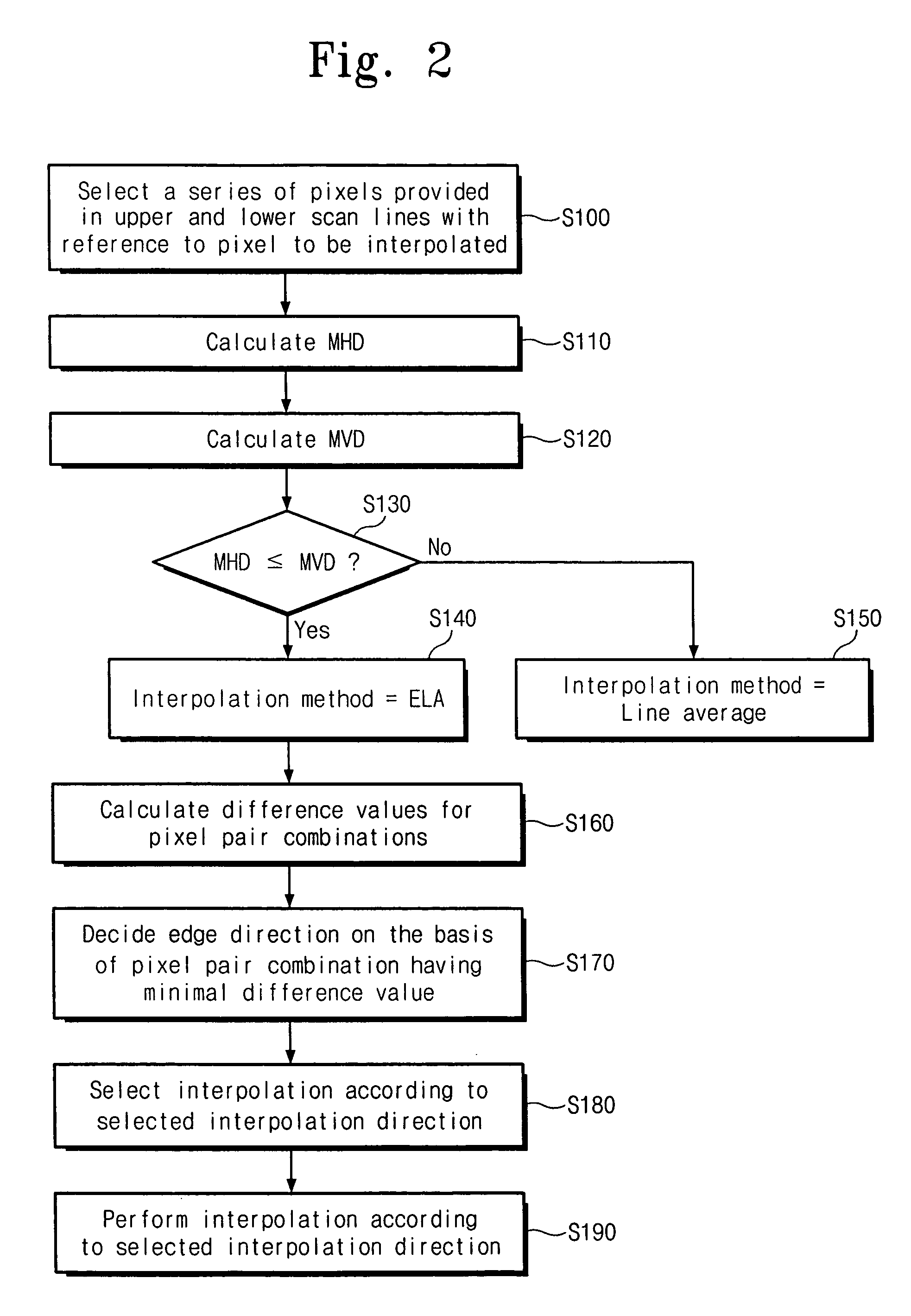Image adaptive deinterlacing method and device based on edge
a deinterlacing method and edge technology, applied in the field of digital video signal processing, can solve the problems of degrading picture quality, complicated construction, high price, etc., and achieve the effect of improving picture quality
- Summary
- Abstract
- Description
- Claims
- Application Information
AI Technical Summary
Benefits of technology
Problems solved by technology
Method used
Image
Examples
Embodiment Construction
The present invention provides a deinterlacing device and method in which a field to be interpolated is divided into a low gradient edge region and a region having other characteristics and then, an ELA is applied at the low gradient edge region to minimize jagging and a Line Average is applied at another region to minimize error, thereby improving an entire picture quality. The present invention has stable performance by using a horizontal difference and a vertical difference, which are adaptive to an image characteristic at the time of dividing into two regions, in comparison with a conventional method using a fixed critical value. When the ELA is used to search a direction having a large similarity, the present invention obtains and averages maximal-numbered pixel difference values, which are available within the window, for respective directions, thereby preventing erroneous interpolation from being effected by a high frequency component. The present invention can not only be u...
PUM
 Login to View More
Login to View More Abstract
Description
Claims
Application Information
 Login to View More
Login to View More - R&D
- Intellectual Property
- Life Sciences
- Materials
- Tech Scout
- Unparalleled Data Quality
- Higher Quality Content
- 60% Fewer Hallucinations
Browse by: Latest US Patents, China's latest patents, Technical Efficacy Thesaurus, Application Domain, Technology Topic, Popular Technical Reports.
© 2025 PatSnap. All rights reserved.Legal|Privacy policy|Modern Slavery Act Transparency Statement|Sitemap|About US| Contact US: help@patsnap.com



